
Instruction
Manual
Reaction Torque
Sensors
Type 9329A, 9339A,
9349A, 9369A,
9389A
9329A_002-267e-02.09

Instruction
Manual
Reaction Torque
Sensors
Type 9329A, 9339A,
9349A, 9369A,
9389A
9329A_002-267e-02.09
Type 9329A, 9339A,
9349A, 9369A,
9389A


Foreword
9329A_002-267e-02.09 Page 1
Foreword
We thank you for choosing a Kistler quality product distin-
guished by technical innovation, precision and long life.
Information in this document is subject to change without
notice. Kistler reserves the right to change or improve its
products and make changes in the content without obliga-
tion to notify any person or organization of such changes
or improvements.
© 2009, Kistler Group. All rights reserved. Except as ex-
pressly provided herein, no part of this manual may be re-
produced for any purpose without the express prior written
consent of Kistler Group.
Kistler Group
Eulachstrasse 22
8408 Winterthur
Switzerland
Tel. +41 52 224 11 11
Fax +41 52 224 14 14
www.kistler.com

Reaction Torque Sensors Type 9329A, 9339A, 9349A, 9369A, 9389A
Page 2 9329A_002-267e-02.09
Content
1. Introduction ................................................................................................................................... 4
2. Important Notes............................................................................................................................. 5
2.1 For Your Safety .................................................................................................................... 5
2.2 Unpacking............................................................................................................................ 6
2.3 Notes on using the Reaction Torque Sensor ......................................................................... 6
2.4 Hints on using these Operating Instructions......................................................................... 7
3. General Description ....................................................................................................................... 8
3.1 What is the Purpose of the Reaction Torque Sensor? ........................................................... 8
3.2 Construction and Functional Principle of the Reaction Torque Sensor .................................. 9
4. Examples of Applications............................................................................................................. 10
4.1 Calibration of a Stationary Torque Measuring Screwdriver ................................................. 10
4.2 Calibration of Torque Wrenches......................................................................................... 11
4.3 Torque Testing of Potentiometers ...................................................................................... 12
4.4 Torque Testing of Ignition Switches ................................................................................... 13
5. Installation and Startup................................................................................................................ 14
5.1 Important Notes.................................................................................................................14
5.2 Installing the Reaction Torque Sensor................................................................................. 14
5.3 Overview of Installation Variants ....................................................................................... 16
5.3.1 Adaptation A: Installation in Shaft with Adapter for Shaft Journal with Pin ........................ 17
5.3.2 Adaptation B: Installation in Shaft with Adapter Flange...................................................... 19
5.3.3 Adaptation C: Installation in Shaft with Integrated Flange.................................................. 21
5.3.4 Adaptation D: Adapter Flange for Wrenches with External Square Head............................ 23
5.3.5 Adaptation E: Screw Plate with Spring Assembly ................................................................ 25
5.3.6 Adaptation F: Desktop Installation with Mounting Flange.................................................. 27
5.4 Basic Circuitry and Connections for the Measuring Chain .................................................. 29
6. Operation..................................................................................................................................... 30
6.1 Charge Amplifier Settings................................................................................................... 30
6.2 Measuring Signal Polarity ................................................................................................... 30
6.3 Measuring Signal Resolution .............................................................................................. 31
6.4 Quasistatic Measurements ................................................................................................. 31
6.5 Sensitive Measurement under High Basic Load................................................................... 32
6.6 Hints for Obtaining good Measuring Results...................................................................... 34
7. Maintenance ................................................................................................................................ 35
7.1 Recalibration ...................................................................................................................... 35
7.2 Maintenance Work ............................................................................................................ 36
8. Troubleshooting........................................................................................................................... 37
8.1 Location of Faults and Remedies ........................................................................................ 37
8.2 Repairing the Reaction Torque Sensor................................................................................ 37

Content
9329A_002-267e-02.09 Page 3
9. Technical Data ..............................................................................................................................38
9.1 Reaction Torque Sensors Type 9329A ... 9389A .................................................................38
9.2 Dimensions Reaction Torque Sensor Type 9329A ... 9389A................................................39
9.3 Accessories Included ...........................................................................................................40
9.4 Optional Accessories...........................................................................................................41
10. Annex ...........................................................................................................................................42
10.1 Glossary ..............................................................................................................................42
10.2 Measurement Uncertainty ..................................................................................................45
10.3 Linearity..............................................................................................................................46
10.4 Frequency Range ................................................................................................................48
10.5 Influence of Temperature....................................................................................................49
11. Index.............................................................................................................................................51
Total Pages 52

Reaction Torque Sensors Type 9329A, 9339A, 9349A, 9369A, 9389A
Page 4 9329A_002-267e-02.09
1. Introduction
Please take the time to thoroughly read this instruction
manual. It will help you with the installation, maintenance,
and use of this product.
Kistler offers a wide range of products for use in measuring
technology:
Piezoelectric sensors for measuring force, torque, strain,
pressure, acceleration, shock, vibration and acoustic-
emission
Strain gage sensor systems for measuring force and
moment
Piezoresistive pressure sensors and transmitters
Signal conditioners, indicators and calibrators
Electronic control and monitoring systems as well as
application-specific software for measuring technology
Data transmission modules (telemetry)
Kistler also develops and produces measuring solutions for
the application fields engines, vehicles, manufacturing,
plastics and biomechanics.
Our product and application brochures will provide you
with an overview of our product range. Detailed data
sheets are available for almost all products.
If you need additional help beyond what can be found
either in this manual or on www.kistler.com, please contact
your Kistler distributor who will also assist you for applica-
tion specific questions.

Important Notes
9329A_002-267e-02.09 Page 5
2. Important Notes
It is essential for you to study the following notes, which
are for your personal safety during work, and to ensure
long term, fault-free operation of this product.
2.1 For Your Safety
This product has been thoroughly tested and has left
the factory in a perfectly safe condition. In order to
maintain this condition and ensure safe operation,
compliance is required with the instructions and warn-
ing notes in these Operating Instructions.
The reaction torque sensor must be installed, operated
and maintained only by persons who are familiar with
this product and who are adequately qualified for the
work involved.
If it is to be assumed that safe operation is no longer
possible, the equipment must be shut down and made
safe against being accidentally started up.
Safe operation must be assumed to be no longer possi-
ble when the product
shows visible signs of damage,
has been overloaded,
is no longer operating,
has been in lengthy storage under unsuitable condi-
tions and,
has been subjected to rough transport conditions.
Fix the reaction torque sensor in position as prescribed.
Details can be found in Section 5.2 "Installing the reac-
tion torque sensor".
Secure all parts mounted on the reaction torque sensor
according to anticipated moments!

Reaction Torque Sensors Type 9329A, 9339A, 9349A, 9369A, 9389A
Page 6 9329A_002-267e-02.09
2.2 Unpacking
Check all packaging for transport damage. Report any such
damage to the transporters and to the authorized Kistler
distributor.
Check accessories delivered (see Section 9.3) before first
use of the equipment. Report any missing parts to the au-
thorized Kistler distributor.
2.3 Notes on using the Reaction Torque Sensor
The reaction torque sensor must be used only under the
environmental and operating conditions specified.
With piezoelectric sensors, insulation resistance is of
crucial importance; it must be approx. 1014 Ω (but not
less than 1013 Ω). In order to preserve this value, all
plug-and-socket connections must be kept absolutely
clean and dry. The insulation resistance can be meas-
ured with the insulation tester Type 5493.
Protect the connector of the Reaction Torque Sensor
against contamination and on no account touch it with
your fingers (connector front). Fit the cover supplied
over the connector when it is not in use.
A high-insulation cable is used to connect the reaction
torque sensor to a charge amplifier. Once fitted, it
should if possible remain connected to the sensor. Use
only specified connecting cables .
We recommend you to protect the cable connector at
the sensor against damage by screwing on the connec-
tor cover provided.
Protect the reaction torque sensor when it is not in use
by storing it in its original packaging.

Important Notes
9329A_002-267e-02.09 Page 7
2.4 Hints on using these Operating Instructions
We recommend you to read the entire operating instruc-
tions carefully. However, if you are in a hurry and already
have experience with Kistler Reaction Torque Sensors, you
can confine yourself to reading the specific information
needed.
We have attempted to give these instructions a clear pres-
entation to make it easier for you to gain direct access to
the information you need.
Please keep these operating instructions in a safe place
where you can retrieve them at any time.
If you lose these operating instructions, please contact your
Kistler distributor and ask them for an immediate replace-
ment.

Reaction Torque Sensors Type 9329A, 9339A, 9349A, 9369A, 9389A
Page 8 9329A_002-267e-02.09
3. General Description
3.1 What is the Purpose of the Reaction Torque Sensor?
Reaction torque sensors are used to measure dynamic and
quasistatic torques.
The main areas of application are:
Calibration
Calibration of manual torque wrenches
Torque setting of pneumatic screwdrivers
Research and Development
Measurement of irregular motion and torsional vibra-
tions on small servo and stepper motors
Measurements of starting torques on electric motors
Measurements on fluid and slipping clutches
Viscosity measurements
Measuring the coefficient of friction of bearings
Designing torsion springs and damping elements
Development of locks and rotary switches
Lubricant development
Biomechanics and ergonomic measurements
Production Engineering
Monitoring automated screwing processes
Monitoring boring and cutting processes
Quality Control
Testing screw connections
Torsion testing of springs
Testing the torque characteristics of hinges
Testing rotary switches
Testing of screw caps
The hole pattern of the bilaterally integrated flange and the
optional accessories enable Kistler reaction torque sensors
to be adapted to almost any task. Bilateral centering seats
and the included centering rings assist in the precise axial
application of torque. A centric bore can be used for shaft
bushing.
Kistler reaction torque sensors are distinguished by high
rigidity and a high natural frequency. The effective useful
frequency range is, however, determined by the natural
frequency of the entire test arrangement. The high resolution
enables the tiniest dynamic changes to be measured, even
where large torques are involved.
Kistler reaction torque sensors are calibrated prior to
delivery and can be used immediately.

General Description
9329A_002-267e-02.09 Page 9
3.2 Construction and Functional Principle of the Reaction Torque Sensor
The special, patented construction of Kistler reaction
torque sensors is distinguished by the fact that the sensor is
integrated under high axial preload between a preload
screw and a nut. The torque is thus transferred by friction
onto the shear-sensitive quartz disks. This sensor preload is
the prerequisite for good output signal linearity, particularly
for small torques.
The reaction torque sensor is seal welded and rust-
resistant. With cable connected and O-ring correctly fitted
in the cable connector, the plug connection is protected
against the ingress of spray water. The cable connection is
protected against mechanical damage by a screw-on con-
nector cover.
Matching centering rings on the centering seats (6) are
provided for precise coaxial application of torque.
1 Sensor
2 Preload screw
3 Nut
4 Plug connection
5 Screw-on connector cover
6 Inner centering seat
7 Outer centering seat
8 Mounting thread
9 Free passage
For dimensions see page 39.
Fig. 1: Construction
The reaction torque sensor uses quartz disks in a circular
arrangement. The shear-sensitive direction of the quartz
disks is tangential, so that a charge signal proportional to
the torque is fed out in a parallel circuit.
Clockwise torques produce a negative charge signal at
the sensor, and a positive display value or voltage at the
analog output of the charge amplifier.
As a result of the piezoelectric measuring principle and due
to the high rigidity of the reaction torque sensor, the mea-
surement is made with practically no displacement.
Fig. 2: Functional principle

Reaction Torque Sensors Type 9329A, 9339A, 9349A, 9369A, 9389A
Page 10 9329A_002-267e-02.09
4. Examples of Applications
4.1 Calibration of a Stationary Torque Measuring Screwdriver
A pneumatic screwdriver with integrated torque sensor is
calibrated with a reaction torque sensor.
Two Measuring Chains Consisting of
Torque sensor Type 9039A (to be calibrated)
Reaction torque sensor Type 9349A (Reference)
2 x charge amplifiers Type 5015A
Fig. 3: Calibration of a torque measuring screwdriver
For this application, the reaction torque sensor is equipped
with a screw plate with spring assembly, see Section 5.3.5.
Various screwing arrangements can be represented with
this structure, depending on the number and hardness of
the cup springs.
Torque sensor Type 9039A
integrated in torque measuring
screwdriver
Reaction torque sensor Type 9349A
with mounting flange Type 9580A1
(Reference)

Examples of Applications
9329A_002-267e-02.09 Page 11
4.2 Calibration of Torque Wrenches
Measuring Chain Consisting of
Reaction torque sensor Types 9329A ... 9389A
on mounting flange Types 9580A0 ... 9580A9
Connecting cable Type 1631C…
Charge amplifier Type 5015A
Fig. 4: Calibrating torque wrenches
Mounting flange
Type 9580A0 ... 9580A9
Ada
p
te
r
Ty
p
e 1631C...
Mz

Reaction Torque Sensors Type 9329A, 9339A, 9349A, 9369A, 9389A
Page 12 9329A_002-267e-02.09
4.3 Torque Testing of Potentiometers
Automated testing of the torque as a function of rotary angle
of potentiometers at an automobile suppliers.
Measuring Chain Consisting of
Reaction torque sensor Type 9339A
ControlMonitor CoMo II-S Type 5859A…
Fig. 5: Testing potentiometers
The ControlMonitor CoMo II-S is used for monitoring pro-
duction processes, where there is a characteristic relation-
ship between a measurand as a function of time y(t) or of a
second measurand y(x) (displacement, rotary angle). A
large number of functions such as thresholds, boxes, limit
position or tolerance band is available for evaluation.
Type 9339A
Potentiomete
r

Examples of Applications
9329A_002-267e-02.09 Page 13
4.4 Torque Testing of Ignition Switches
Reaction torque sensor in a system for testing the torque
characteristics of ignition switches over the entire rotary
angle range.
Fig. 6: Testing ignition switches

Reaction Torque Sensors Type 9329A, 9339A, 9349A, 9369A, 9389A
Page 14 9329A_002-267e-02.09
5. Installation and Startup
5.1 Important Notes
The reaction torque sensors Type 9329A … 9389A are
precision instruments whose specifications can be fully util-
ized only when they are correctly used, and remain so only
when handled carefully. Ensure that you comply with the
following directions:
Do not drop the reaction torque sensor and do not sub-
ject it to hard impacts! The peak force of this kind of
shock can cause permanent damage.
Do not use a hammer to position the workpieces, since
hammer blows can also cause damage!
The following sections describe the installation of the reac-
tion torque sensor and the setting up of the measuring
chain.
5.2 Installing the Reaction Torque Sensor
Please comply with the following instructions for correct
installation of the reaction torque sensor
The reaction torque sensor must be installed only by
persons who are familiar with this instrument and are
adequately qualified for this work.
When installation takes place in a shaft, the coaxial de-
viation must be not more than 0,02 mm. Deviations
from coaxial straightness result in unwanted bending
moments, which can overload and permanently dam-
age the sensor. The contact surfaces of adapter flanges
must be machined perfectly flat. If the reaction torque
sensor is used as a calibration element, the adjoining
surfaces must have a roughness of Ra ≤0,8 μm (N6),
otherwise a roughness of Ra ≤6,3 μm (N9) will suffice.
The contact surfaces must be thoroughly cleaned be-
fore installation.
The reaction torque sensor is designed for measuring
torques in the longitudinal axis. Although additional
bending moments, tensile, pressure and shear forces
can be absorbed to a certain extent by the reaction
torque sensor, these must be avoided as far as possible.

Installation and Startup
9329A_002-267e-02.09 Page 15
The torque must be applied exclusively via the flange
surfaces at the upper and lower sides of the reaction
torque sensor. The torque is thereby transferred via
socket head screws (minimum property class 12.9) or
mounting parts with corresponding external threads.
Select the length of the screws so that the depth of the
threaded blind bore in the flange of the reaction torque
sensor is utilized to the fullest extent possible. However,
the screws must not come into contact with the base of
the threaded blind bore.
Fig. 7: Reaction torque sensor with mounting flange
When firmly tightening the screw connections, the fork
wrench must only be used to hold the flange on that
side where the screw connections are being tightened!
If the opposite side is held, there is a risk that the screw
connection in the reaction torque sensor will loosen
causing the latter to turn within itself. This will alter the
internal preload resulting in the calibration being lost,
and possibly rendering the reaction torque sensor unus-
able for precise torque measurement! In this event, the
reaction torque sensor must again be properly preloaded
and recalibrated!
Tightening torques MA for cap screws
Type 9329A M3x8 MA = 1 N·m
Type 9339A M4x10 MA = 2 N·m
Type 9349A M5x12 MA = 4 N·m
Fig. 8: Installing reaction torque sensor Type 9369A M8x20 MA = 21 N·m
Type 9389A M12x30 MA = 100 N·m
We advise using screws of at least property class 12.9.
The connecting cable must be connected only after in-
stallation of the reaction torque sensor has been com-
pleted. As contamination of the plug connections can
result in considerable measuring inaccuracies (primarily
drift), the plastic connector covers should remain screw-
ed on during installation, both on the sensor and on the
cable! Great care should be taken in particular in very
dirty environments.

Reaction Torque Sensors Type 9329A, 9339A, 9349A, 9369A, 9389A
Page 16 9329A_002-267e-02.09
5.3 Overview of Installation Variants
Fig. 9: Installation variants for reaction torque sensors
Mz
Desktop Mounting
Shaft Installation
A
Installation in shaft with
adapter for shaft journal
with pin
B
Installation in shaft with
adapter flange
C
Installation in shaft with
integrated flange
E
Screw plate with
spring assembly
Adapter for straight bore
recess with pin
Reaction torque
sensor
Reaction torque
sensor
Reaction torque
sensor
Reaction torque
sensor
F
F
Desktop installation with
mounting flange
Reaction torque
sensor
Reaction torque
sensor
D
Adapter flange for
wrenches with external
square head
Reaction torque senso
r

Installation and Startup
9329A_002-267e-02.09 Page 17
5.3.1 Adaptation A: Installation in Shaft with Adapter for Shaft Journal with Pin
Fig. 10: Installation example A
Mz = Torque [N·m]
Applied via shaft with tool shank or cylinder bore
and flange adapter with pin (pinned during installa-
tion).
Fz = Compression force [N]
Fs = Transverse force [N]
This "disturbance force" represents the shear forces
and bending moments acting on the reaction torque
sensor. The maximum permissible values are listed in
the table in the "Technical data" on Page 38.
Adapter for shaft journal
with pin
Customized tool
adapter
Centering rings
(included accessories)
Adapter for cylinder
bore recess with pin
Pinned during installation
Pinned during installation
MA
F
s
Installation clearance S
Mz
Fz
MA
Page is loading ...
Page is loading ...
Page is loading ...
Page is loading ...
Page is loading ...
Page is loading ...
Page is loading ...
Page is loading ...
Page is loading ...
Page is loading ...
Page is loading ...
Page is loading ...
Page is loading ...
Page is loading ...
Page is loading ...
Page is loading ...
Page is loading ...
Page is loading ...
Page is loading ...
Page is loading ...
Page is loading ...
Page is loading ...
Page is loading ...
Page is loading ...
Page is loading ...
Page is loading ...
Page is loading ...
Page is loading ...
Page is loading ...
Page is loading ...
Page is loading ...
Page is loading ...
Page is loading ...
Page is loading ...
Page is loading ...
-
 1
1
-
 2
2
-
 3
3
-
 4
4
-
 5
5
-
 6
6
-
 7
7
-
 8
8
-
 9
9
-
 10
10
-
 11
11
-
 12
12
-
 13
13
-
 14
14
-
 15
15
-
 16
16
-
 17
17
-
 18
18
-
 19
19
-
 20
20
-
 21
21
-
 22
22
-
 23
23
-
 24
24
-
 25
25
-
 26
26
-
 27
27
-
 28
28
-
 29
29
-
 30
30
-
 31
31
-
 32
32
-
 33
33
-
 34
34
-
 35
35
-
 36
36
-
 37
37
-
 38
38
-
 39
39
-
 40
40
-
 41
41
-
 42
42
-
 43
43
-
 44
44
-
 45
45
-
 46
46
-
 47
47
-
 48
48
-
 49
49
-
 50
50
-
 51
51
-
 52
52
-
 53
53
-
 54
54
-
 55
55
Kistler 9339A Owner's manual
- Type
- Owner's manual
Ask a question and I''ll find the answer in the document
Finding information in a document is now easier with AI
Related papers
-
 Kistler 6190CA5 Owner's manual
Kistler 6190CA5 Owner's manual
-
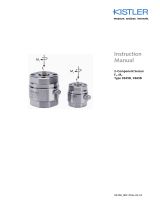 Kistler 9345B Owner's manual
Kistler 9345B Owner's manual
-
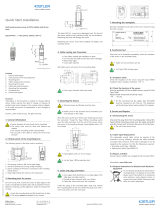 Kistler 6161AASP Quick start guide
Kistler 6161AASP Quick start guide
-
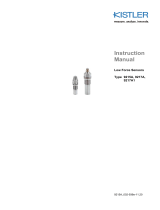 Kistler 9217A1 Owner's manual
Kistler 9217A1 Owner's manual
-
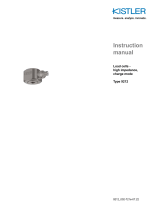 Kistler 9212 Owner's manual
Kistler 9212 Owner's manual
-
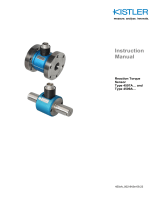 Kistler 4509A50 Owner's manual
Kistler 4509A50 Owner's manual
-
 Kistler 4510B Owner's manual
Kistler 4510B Owner's manual
-
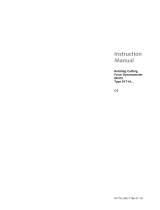 Kistler 9171A Owner's manual
Kistler 9171A Owner's manual
-
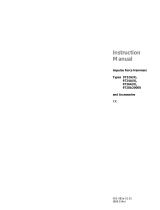 Kistler 9722A500 Owner's manual
Kistler 9722A500 Owner's manual
-
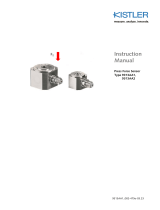 Kistler 9313AA2 Owner's manual
Kistler 9313AA2 Owner's manual
Other documents
-
Dodge Intrepid User manual
-
MV Agusta 2008 F4 312RR 1078 Workshop Manual
-
Danfoss S90 P User guide
-
Jeep 2001 Wrangler TJ User manual
-
Chrysler Intrepid User manual
-
MV Agusta BRUTALE 910 S Workshop Manual
-
Chrysler Vehicle User manual
-
Jeep Cherokee 2000 User manual
-
Chrysler 48RE User manual
-
Jeep Cherokee 2000 User manual
































































